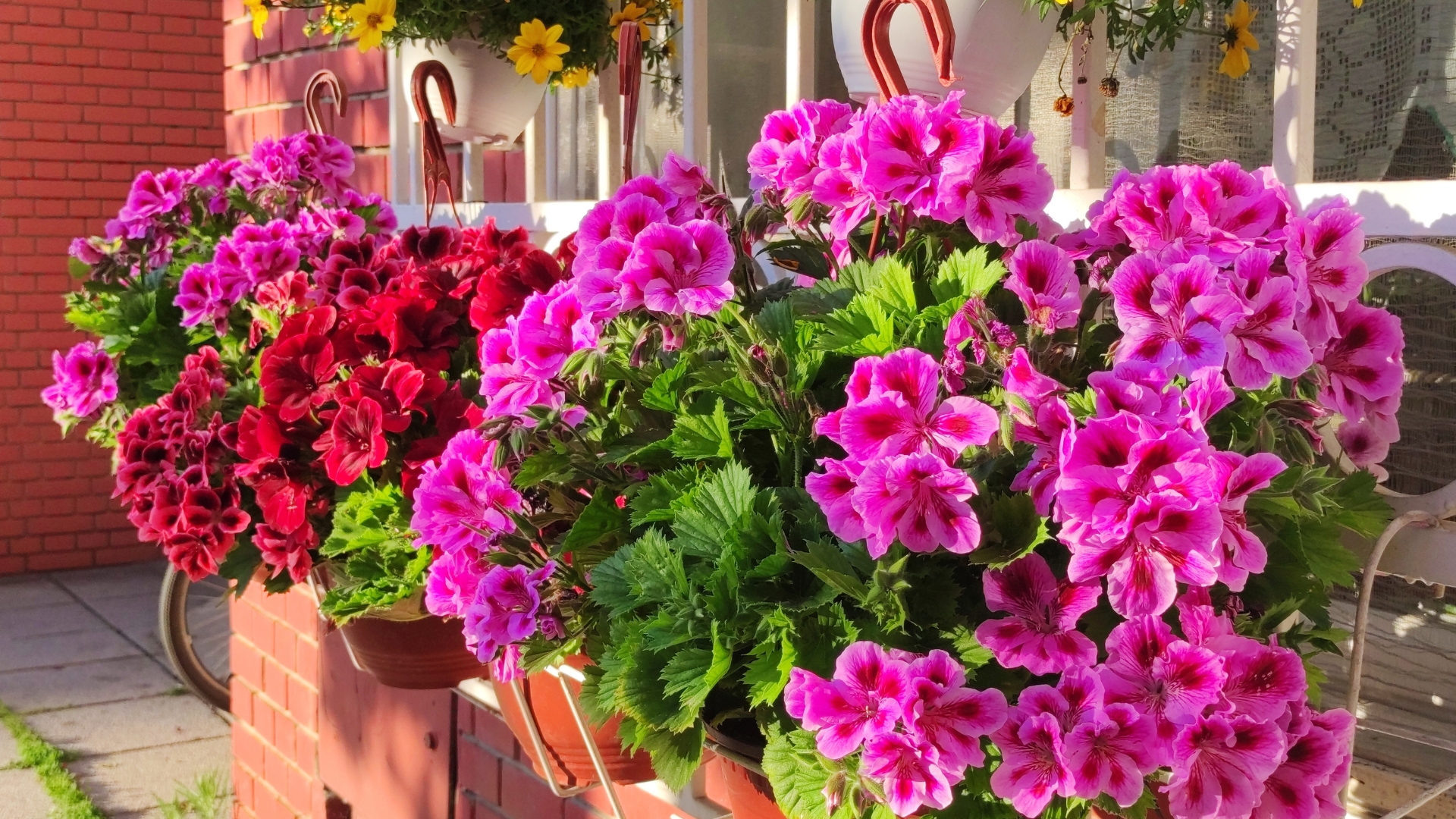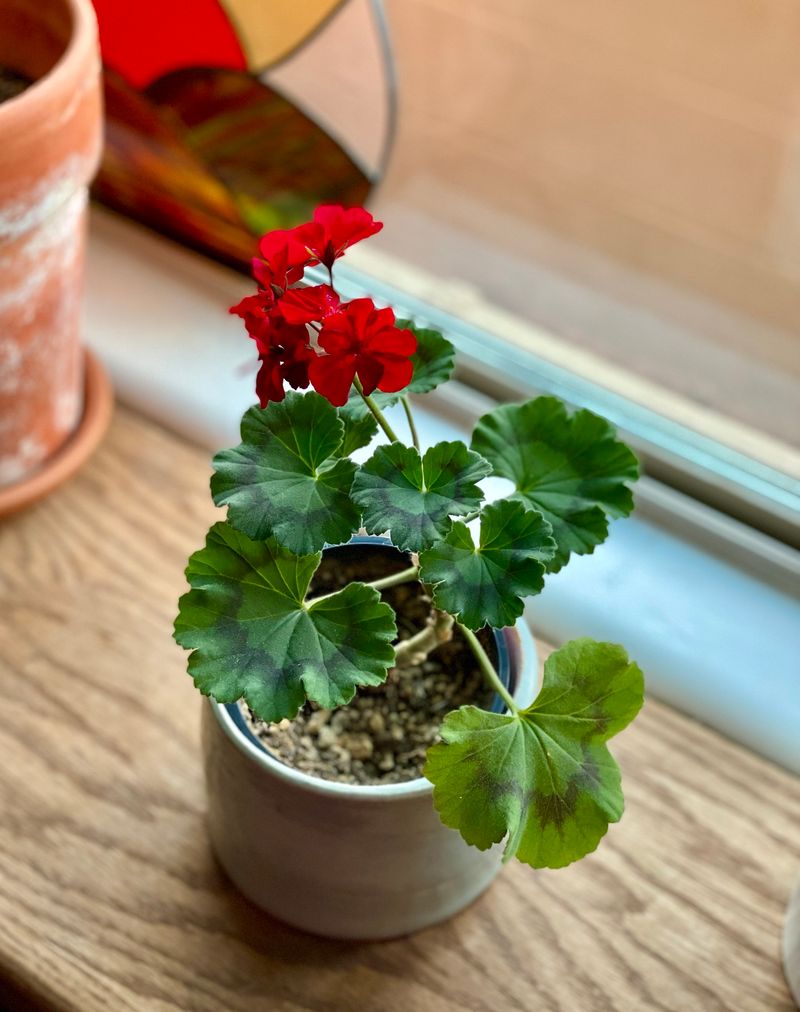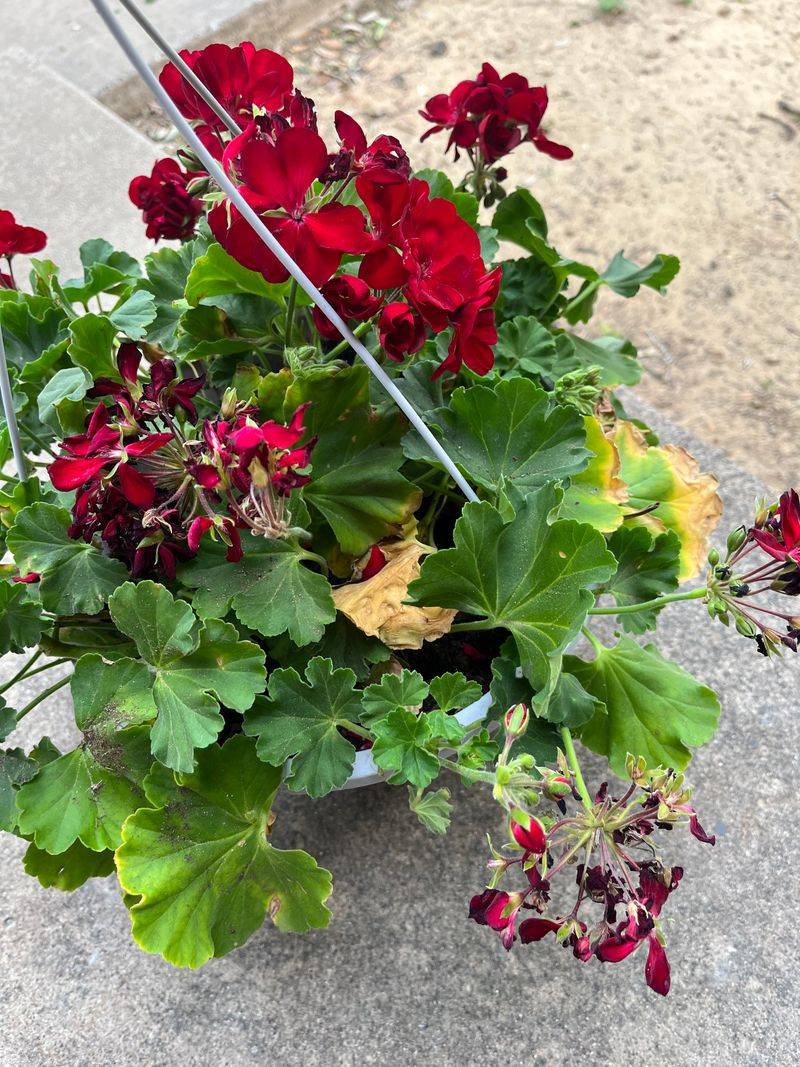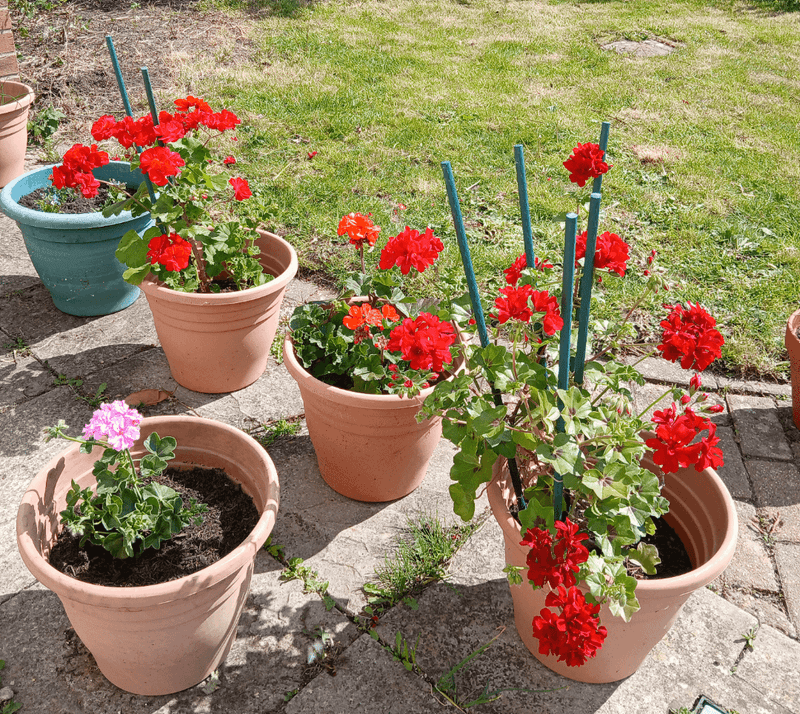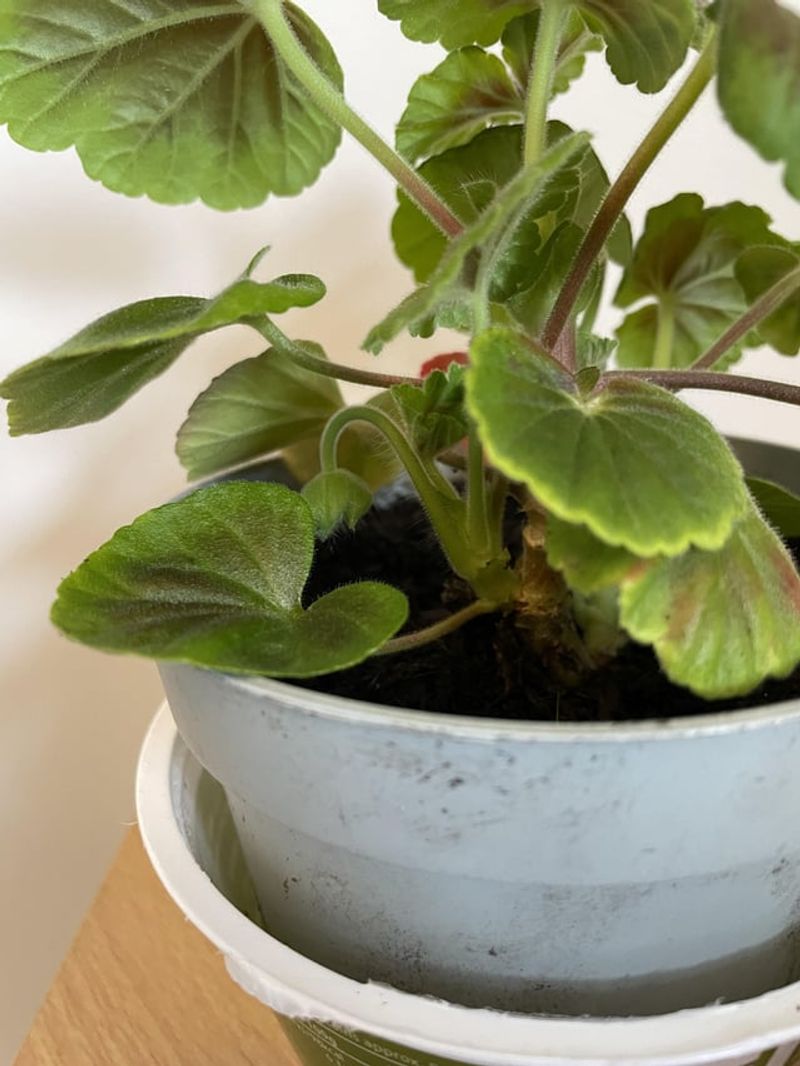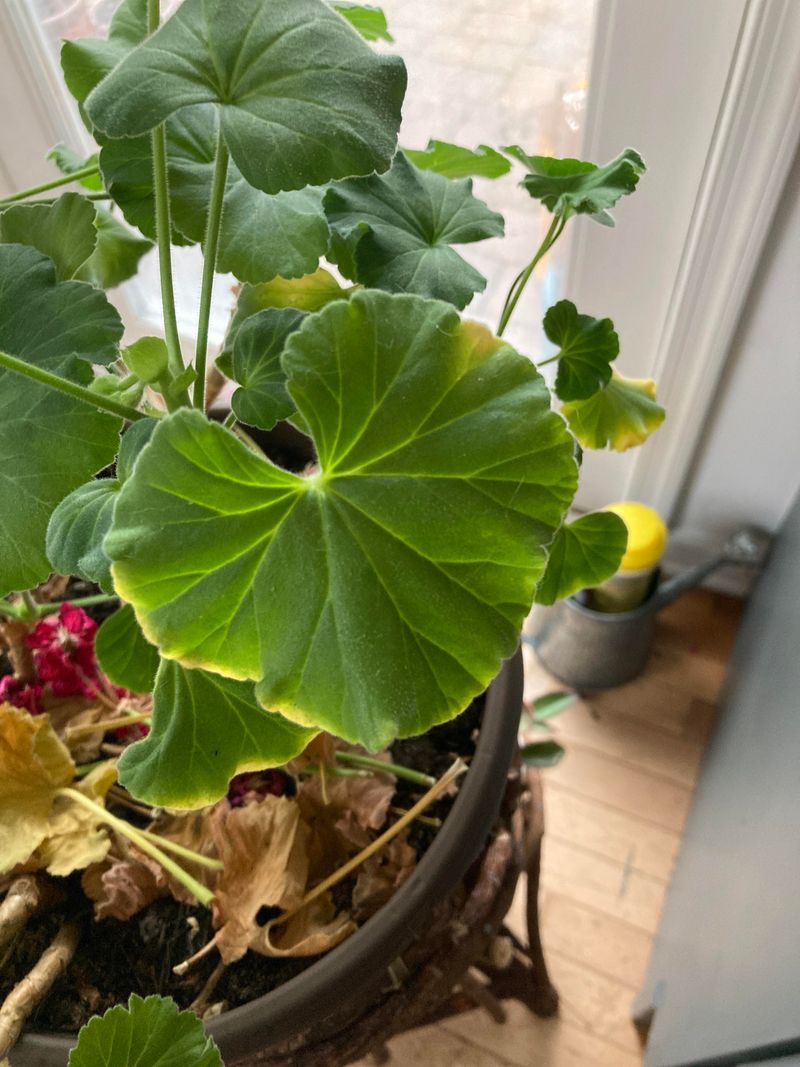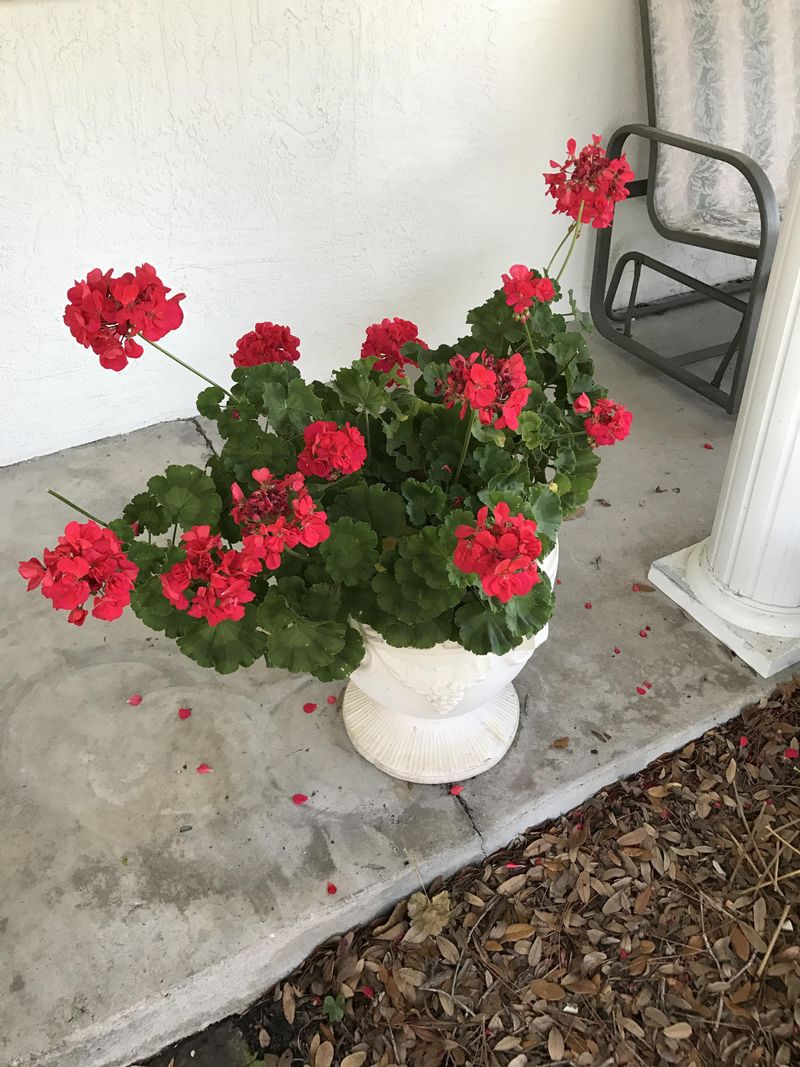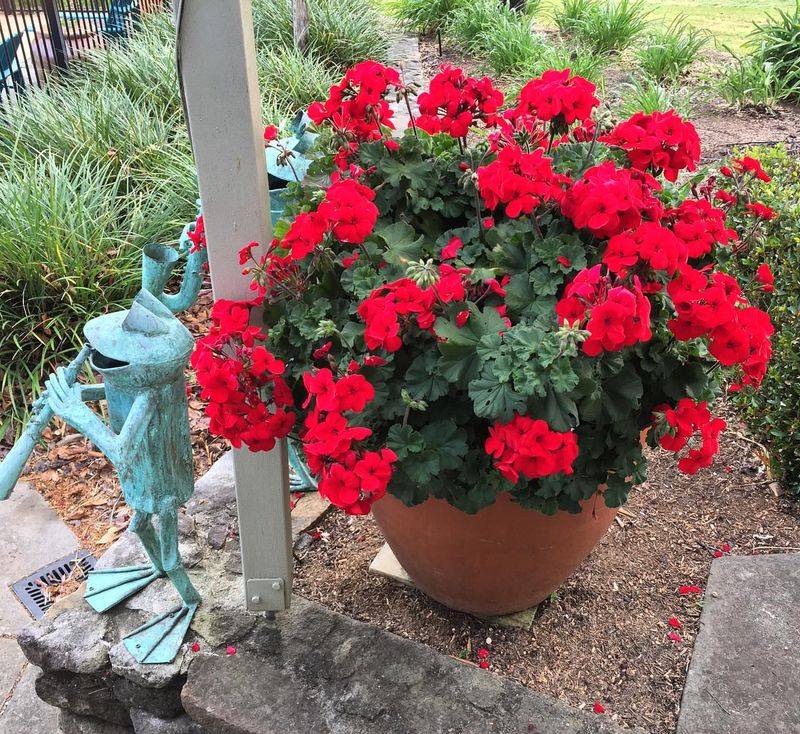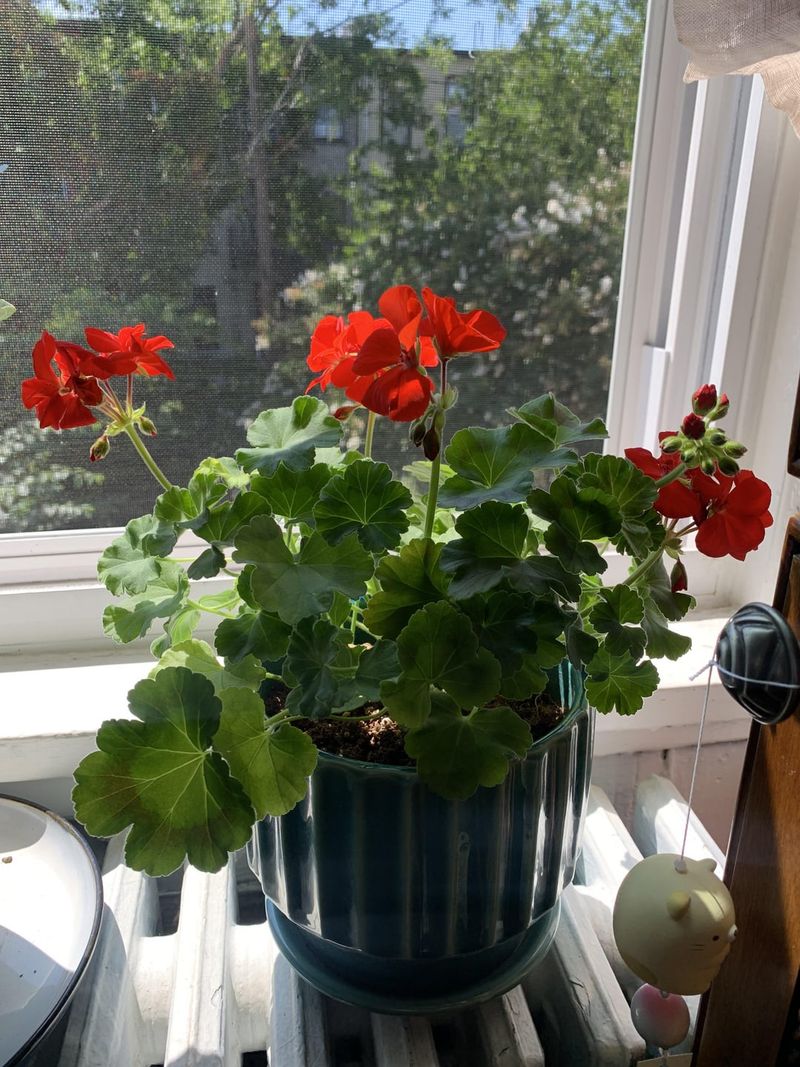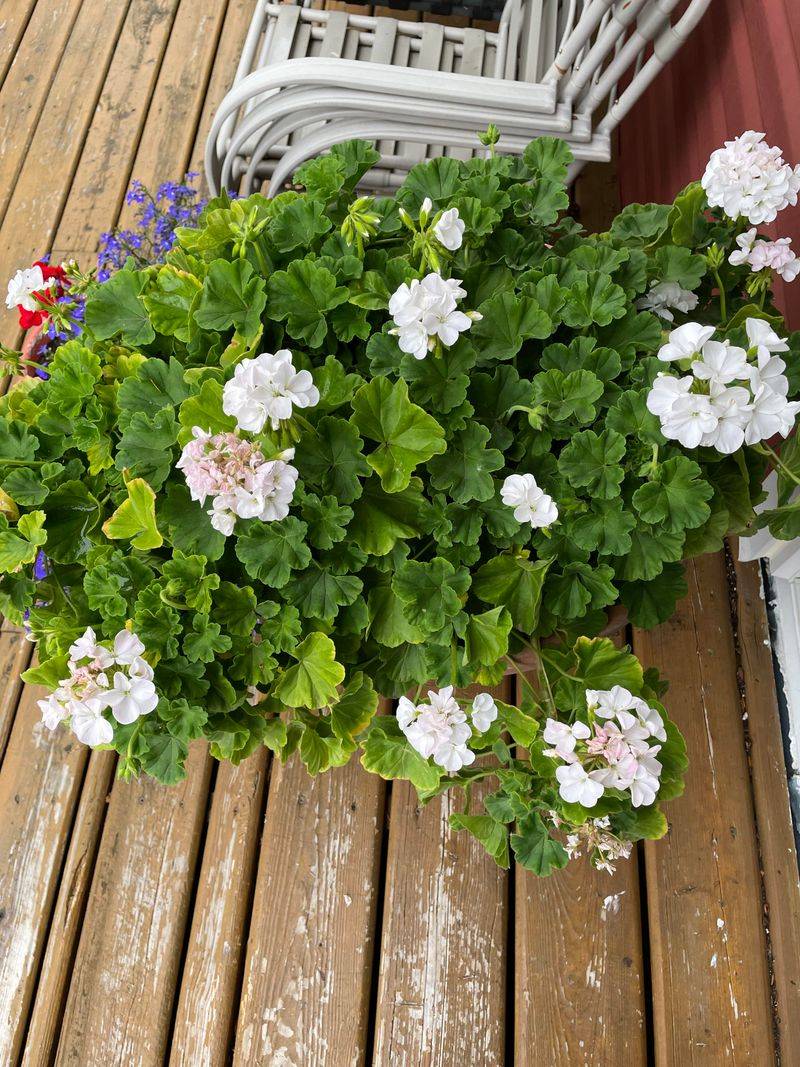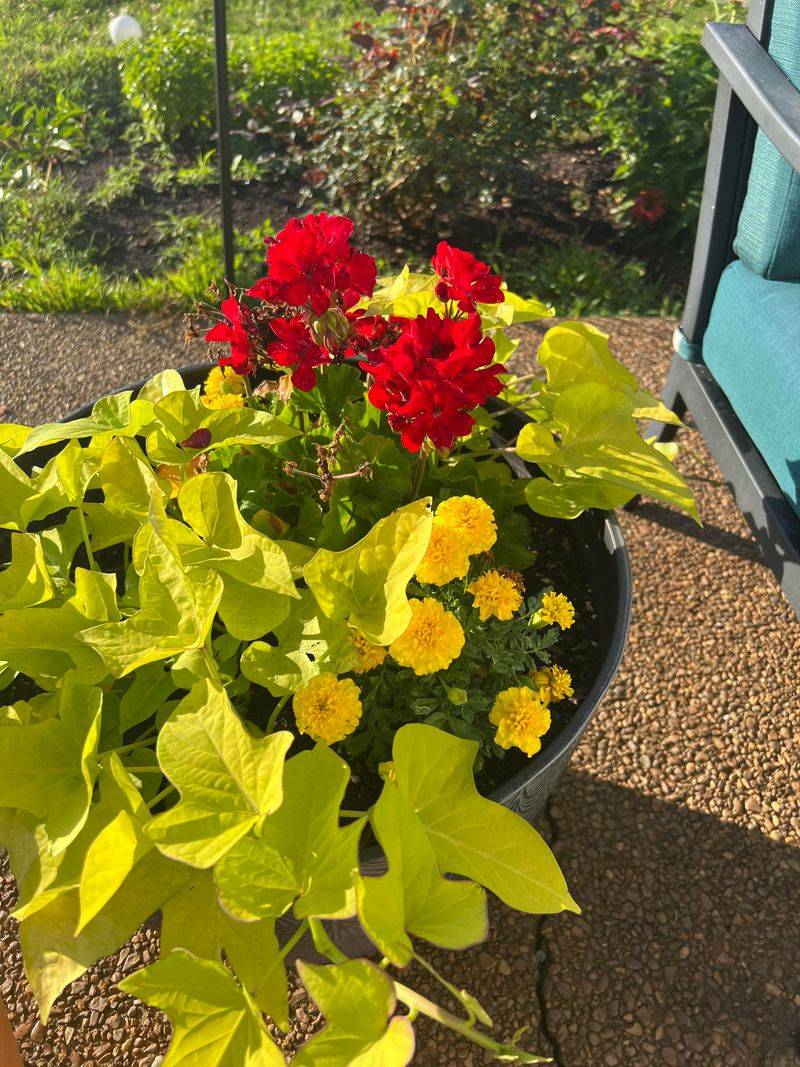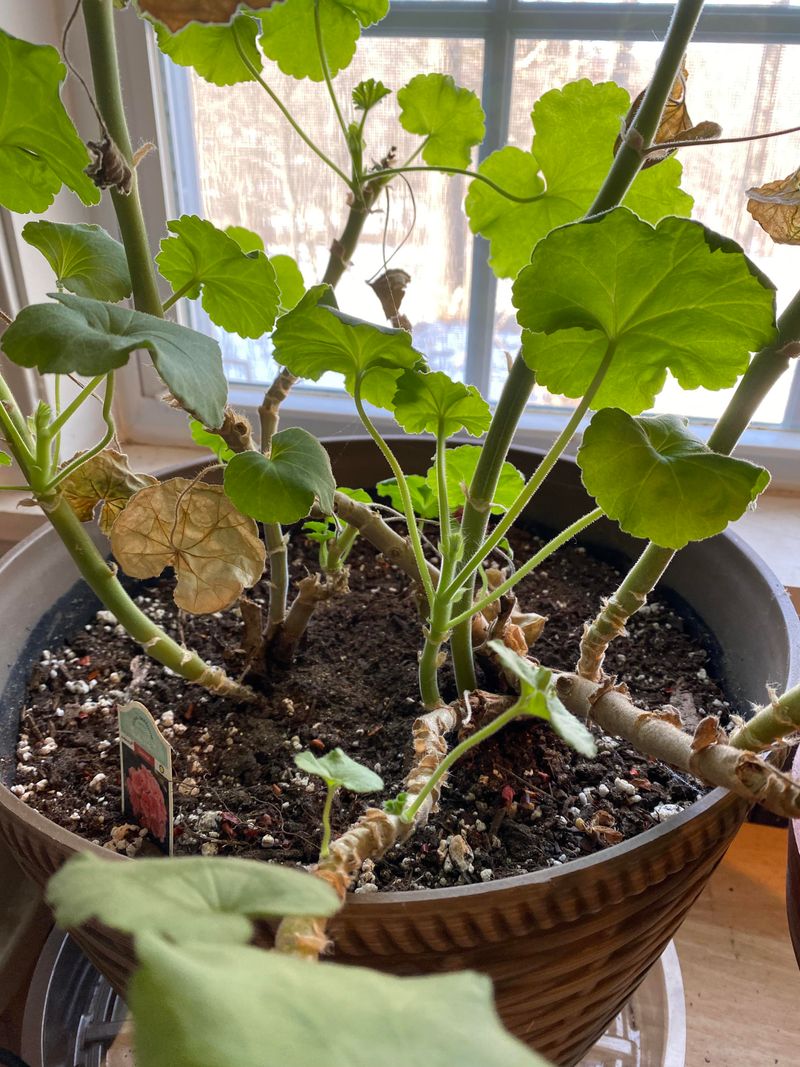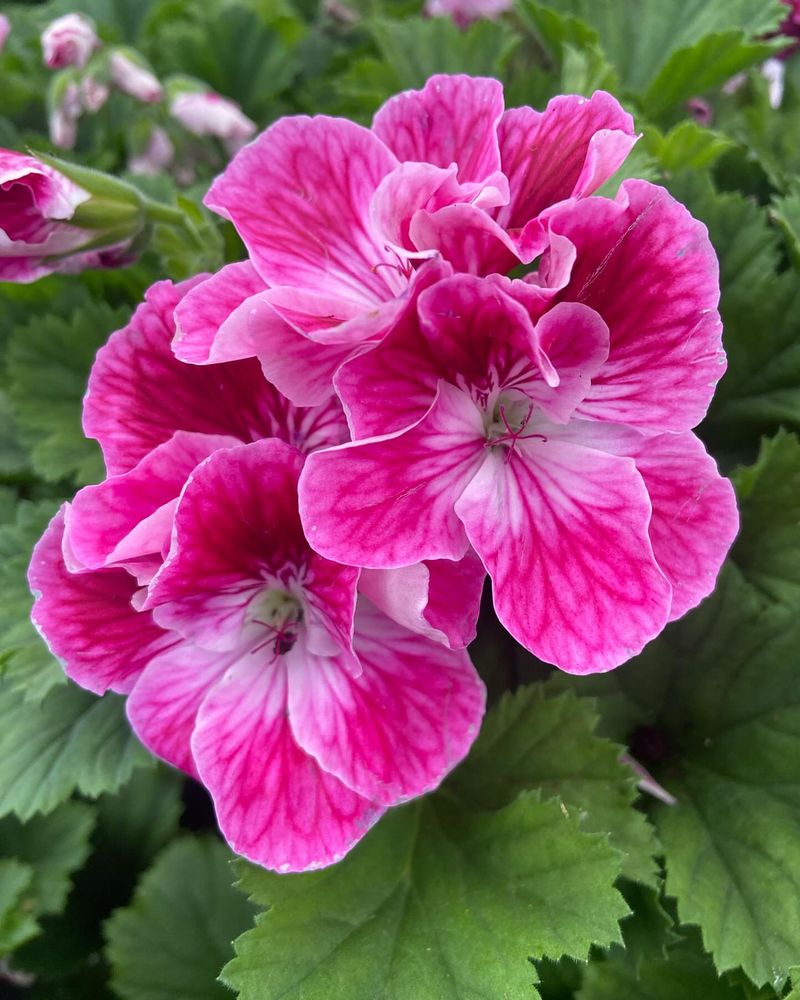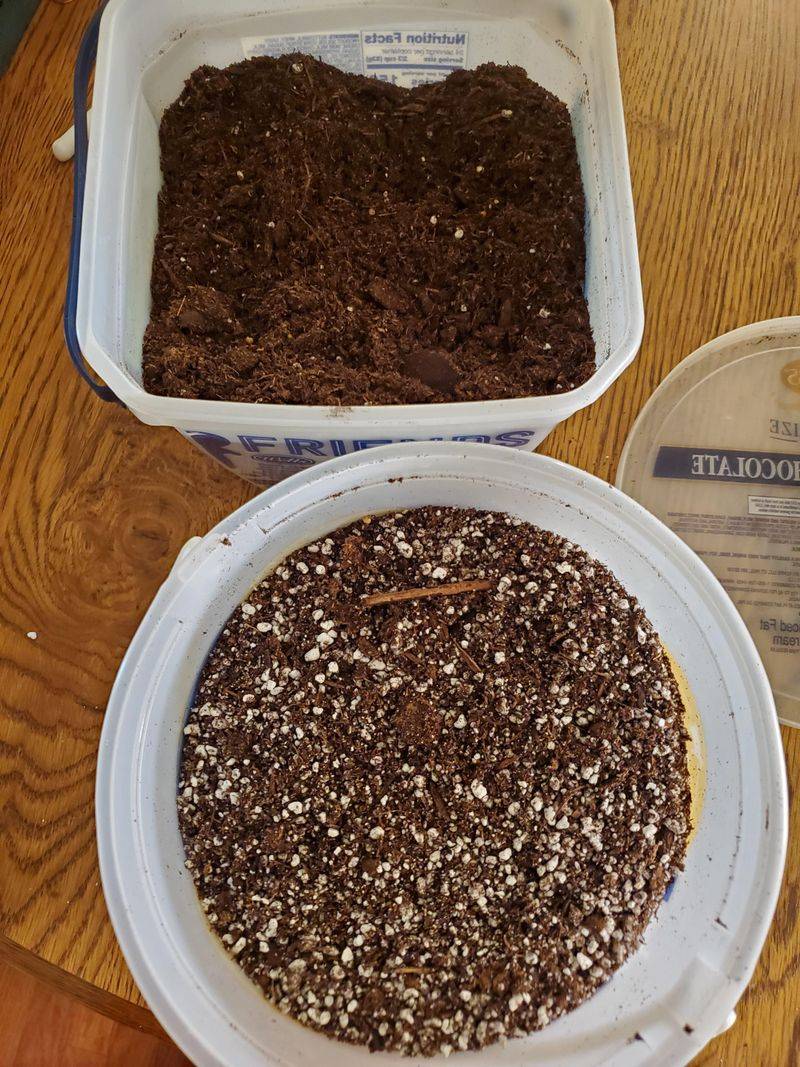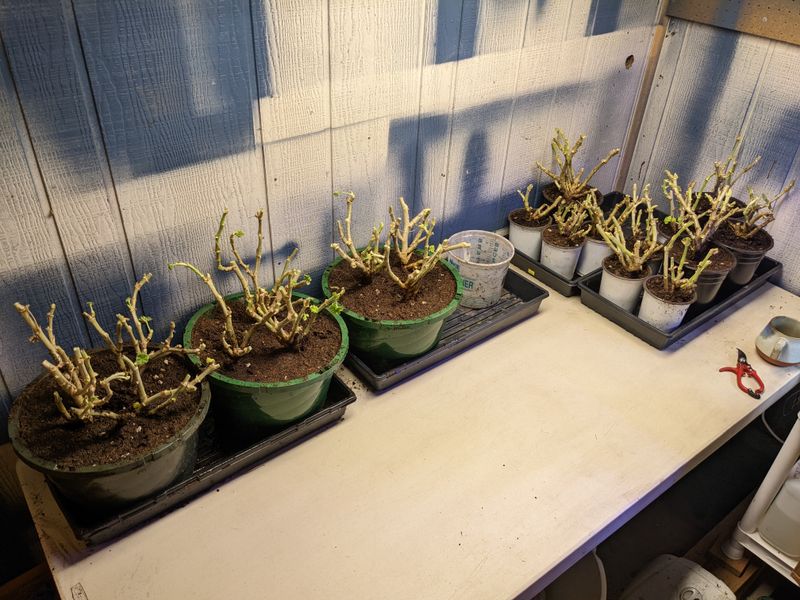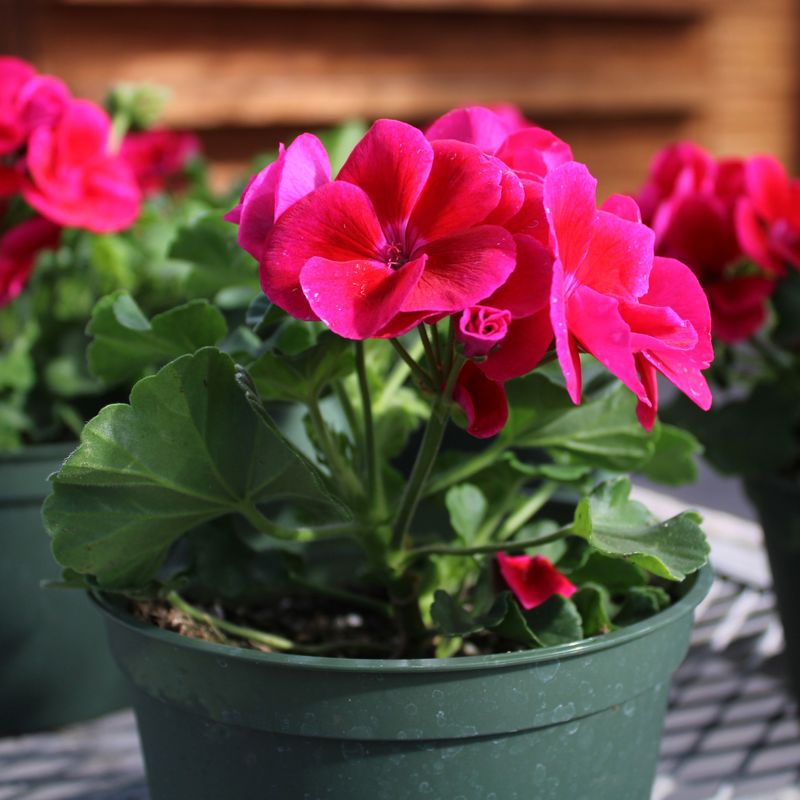Geraniums are summer superstars—but with a few clever tricks, they can bloom even bigger and longer. I’ve tried everything from pruning to secret soil boosts, and these 15 hacks truly made a difference.
Whether you grow them in pots or garden beds, these tips will help your geraniums thrive all season. I’ll also share what’s worked best for keeping the blooms coming nonstop.
A little extra effort now means color that keeps going strong through summer!
1. Morning Watering Magic
Early bird gardeners catch the healthiest geraniums! Watering these beauties in the morning allows leaves to dry completely before evening, preventing fungal diseases that thrive in damp conditions. The cool morning hours also mean less water evaporates before reaching roots.
Your geraniums will absorb moisture more efficiently during this time, establishing stronger root systems. Plus, morning-watered plants develop better resistance to afternoon heat stress, keeping those blooms coming strong all summer long.
2. Deadhead Like A Pro
Snip those spent blooms away at the first sign of wilting! Regular deadheading tricks geraniums into producing more flowers instead of wasting energy on seed production. Look for the swollen base where the flower stalk meets the main stem.
Cut just above the nearest leaf joint for the cleanest result. Many gardeners miss this crucial step, but spending just five minutes every few days removing faded flowers can double your plant’s blooming power throughout the entire summer season.
3. Coffee Grounds Boost
Your morning brew can work wonders for geraniums! Used coffee grounds add nitrogen to soil while improving drainage and attracting earthworms. Sprinkle a thin layer around plants monthly, being careful not to pile grounds against stems.
The slight acidity helps geraniums absorb nutrients more effectively from the soil. As a bonus, many gardeners report that coffee grounds help deter common garden pests like slugs and snails that might otherwise munch on your precious plants.
4. Pinching For Bushiness
Forget those leggy, sparse-looking geraniums! Simply pinch new growth tips between your thumb and forefinger when plants are about 6 inches tall. This small action stimulates hormones that activate dormant side buds, creating fuller plants with more flowering points.
Continue occasional pinching throughout the season whenever stems start looking too long. The result? Compact, bushy geraniums that produce dramatically more blooms and stand up better to summer storms without flopping over or requiring stakes.
5. Banana Peel Power
Don’t toss those banana peels! They’re packed with potassium, calcium, and phosphorus – exactly what geraniums need for spectacular blooms. Cut peels into small pieces and bury them an inch deep around your plants, where they’ll decompose and release nutrients gradually.
The potassium especially helps strengthen cell walls, making your geraniums more drought-resistant and disease-resistant. For container plants, try making banana peel tea by soaking peels in water overnight and using the strained liquid for watering.
6. Container Drainage Tricks
Geraniums hate wet feet! Before planting, place a coffee filter over drainage holes to keep soil in while letting water escape freely. Add a layer of pebbles or broken pottery pieces at the bottom of containers for improved drainage.
Raise pots slightly off the ground using pot feet or small stones to ensure water flows away completely. This simple setup prevents root rot – the number one killer of container geraniums – and helps maintain the perfect moisture balance for continuous summer blooming.
7. Eggshell Calcium Boost
Crunch up those breakfast eggshells for geranium gold! Rinse shells, let them dry completely, then grind them into a fine powder using a coffee grinder. This homemade calcium supplement strengthens cell walls and helps prevent blossom end rot in developing flower buds.
Sprinkle a tablespoon around each plant monthly and gently work into the soil surface. The slow-release calcium creates stronger stems that support bigger bloom clusters without breaking, even during summer storms or windy conditions.
8. Afternoon Shade Secret
Hot afternoon sun can stress even sun-loving geraniums! Position plants where they receive morning sunshine but get relief from intense rays after 2pm. Eastern exposures work perfectly, or use taller plants to create natural afternoon shade.
This light pattern gives geraniums enough energy for blooming while preventing heat stress that causes flower drop. In extreme heat waves, consider adding temporary shade cloth during the hottest part of the day to keep your geraniums blooming non-stop through summer’s worst.
9. Epsom Salt Magic
Magnesium deficiency often shows up as yellowing leaves with green veins on geraniums. Enter Epsom salt – the miracle cure! Dissolve one tablespoon in a gallon of water and apply monthly as a foliar spray or soil drench.
The magnesium sulfate helps plants produce chlorophyll and absorb other nutrients more efficiently. Gardeners who use this trick report more vibrant foliage colors and significantly larger flower clusters on their geraniums throughout the entire growing season.
10. Companion Planting Winners
Geraniums play nicely with friends! Plant them alongside roses to repel Japanese beetles, or pair with tomatoes to confuse pests with their strong scent. Petunias and geraniums create a stunning color combination while sharing similar care needs.
Avoid planting near ivy or other aggressive vines that compete for nutrients. The right neighbors can enhance your geraniums’ natural pest resistance while creating more visually interesting garden spaces that bloom continuously from late spring through early fall.
11. Pruning For Prolonged Blooms
Mid-summer geraniums often get leggy and produce fewer flowers. The fix? A bold haircut! Around July, trim back about one-third of the plant’s height, removing older stems and any yellowing leaves.
This rejuvenation pruning stimulates fresh growth and a second major flush of blooms. Don’t worry about being too harsh – geraniums bounce back quickly from pruning. Within two weeks, you’ll see new growth emerging, and within a month, your plants will be flowering even more abundantly than before.
12. Vinegar Spray Defense
White flies and aphids love geraniums almost as much as we do! Mix one part white vinegar with three parts water and a drop of dish soap for a natural pest deterrent. Spray in the early morning on the undersides of leaves where pests hide.
The acetic acid disrupts insects’ cell membranes without harming plants when properly diluted. Repeat weekly during pest season for best results. This homemade solution keeps your geraniums looking pristine without exposing your garden to harsh chemicals.
13. Perfect Potting Mix Formula
Skip store-bought potting soil and mix your own geranium paradise! Combine equal parts garden soil, perlite, and compost with a handful of slow-release fertilizer pellets. This custom blend provides ideal drainage while retaining just enough moisture.
The compost feeds plants gradually throughout the season without burning roots. Geraniums planted in this mix develop stronger root systems that support more abundant flowering. As a bonus, you’ll save money while giving your plants exactly what they need.
14. Overwintering Champions
Don’t say goodbye to favorite geraniums in fall! Before first frost, trim plants back by half and pot them up in fresh soil. Move to a cool, bright location where temperatures stay between 50-60°F through winter.
Water sparingly – just enough to prevent complete drying out. Come spring, you’ll have established plants ready to burst into bloom weeks before newly purchased ones. This simple technique saves money and preserves special varieties that might not be available next year.
15. Baking Soda Fungus Fighter
Summer humidity often triggers powdery mildew on geranium leaves. Mix one tablespoon baking soda with a quart of water and add a few drops of liquid soap. Spray this solution on plants every two weeks as a preventative measure.
The alkaline environment created on leaf surfaces makes it impossible for fungal spores to establish. Apply in morning hours so leaves dry completely before evening. This safe remedy keeps foliage looking perfect all season without resorting to harsh chemical fungicides.

